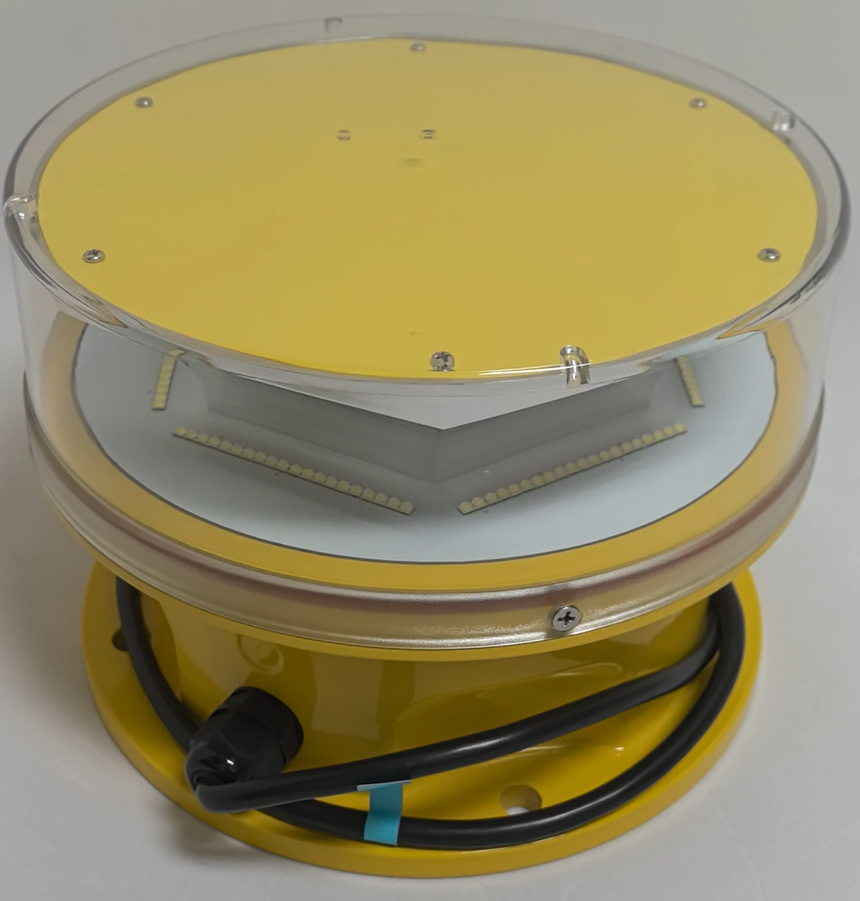In the realm of aviation, where the skies are a vast canvas of possibilities and challenges, one element stands out as a silent sentinel ensuring safety and navigation - the medium intensity aviation light. These unassuming yet crucial lights play a pivotal role in the complex world of air travel.
Medium intensity aviation lights are more than just sources of illumination. They are beacons of hope and guidance for pilots, air traffic controllers, and passengers alike. These lights are carefully designed and engineered to meet the specific needs of the aviation industry, where precision and reliability are of utmost importance.

The intensity of these lights is carefully calibrated to be medium, striking a delicate balance. Not too bright to cause glare or distraction, yet not too dim to be ineffective. This medium intensity is crucial as it allows for optimal visibility without overwhelming the senses. It enables pilots to clearly see the lights from a distance, providing essential cues for navigation and approach.
| medium intensity aviation light | 45R |
One of the key functions of medium intensity aviation lights is to mark the boundaries of airports and runways. In the darkness of night or in low visibility conditions such as fog, rain, or snow, these lights act as a lifeline for pilots. They guide the aircraft safely to the runway, ensuring a smooth landing. Without these lights, the task of finding and approaching an airport would be extremely difficult and dangerous.
Moreover, medium intensity aviation lights also play a crucial role in air traffic control. They help controllers monitor the movement of aircraft and ensure proper separation between them. By providing clear visual signals, these lights enable controllers to make informed decisions and maintain the safety and order of air traffic.
The technology behind medium intensity aviation lights is constantly evolving. Advancements in LED technology have led to more efficient and reliable lights. LEDs offer several advantages over traditional light sources, including lower power consumption, longer lifespan, and greater durability. They also provide a more consistent light output, ensuring that the medium intensity is maintained even in extreme conditions.
In addition to their practical applications, medium intensity aviation lights also have an aesthetic appeal. At night, the soft glow of these lights creates a beautiful and mesmerizing sight. They add to the charm of airports and the surrounding areas, making them a sight to behold for both aviation enthusiasts and passersby.
However, the importance of medium intensity aviation lights is often overlooked. People take for granted the safety and convenience they provide. But behind these seemingly simple lights lies a complex web of engineering, technology, and dedication. Manufacturers and engineers work tirelessly to ensure that these lights meet the highest standards of quality and performance.
In conclusion, medium intensity aviation lights are an essential part of the aviation industry. They are the unsung heroes that silently guide and protect aircraft and their passengers. From marking runways to facilitating air traffic control, these lights play a crucial role in ensuring the safety and efficiency of air travel. As technology continues to advance, we can expect medium intensity aviation lights to become even more sophisticated and effective, continuing to shine brightly in the skies above. So, the next time you see an aircraft soaring through the sky or landing at an airport, take a moment to appreciate the vital role played by medium intensity aviation lights.